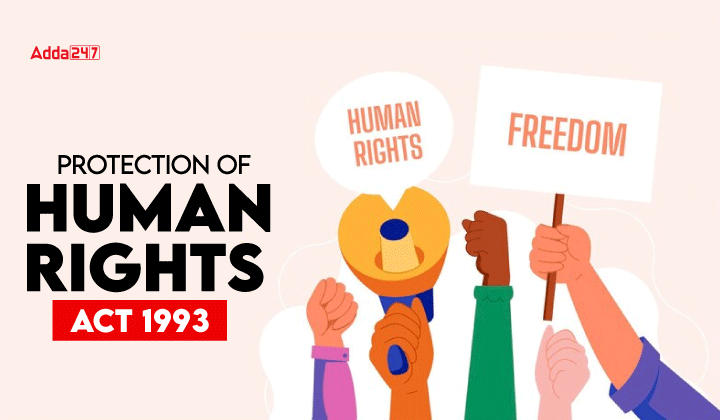Table of Contents
The Protection of Human Rights Act, 1993, represents a significant legislative measure in India aimed at protecting the fundamental rights of individuals against violations, particularly from State actions. These rights, including life, liberty, equality, and dignity, form the foundation of human existence and are enshrined in both the Indian Constitution and international covenants. This article explores the historical background, key provisions, scope, and necessity of the Act, highlighting its role in safeguarding human rights in India.
History of the Protection of Human Rights Act, 1993
The modern concept of human rights emerged in the aftermath of World War II, with the creation of the United Nations and the adoption of the Universal Declaration of Human Rights (1948). Though this declaration was not legally binding, it paved the way for enforceable international treaties like the International Covenant on Civil and Political Rights (ICCPR) and the International Covenant on Economic, Social, and Cultural Rights (ICESCR), both adopted in 1966 and ratified by India in 1976.
In the early 1990s, India faced intense international criticism for human rights violations, particularly in conflict zones like Jammu and Kashmir. Amidst this global pressure and increasing domestic demands for legal reforms, the Human Rights Commission Bill was introduced in 1992, eventually leading to the enactment of the Protection of Human Rights Act, 1993. The Act, which came into force retrospectively from September 28, 1993, established the National Human Rights Commission (NHRC) and other mechanisms to protect human rights.
Important Provisions of the Protection of Human Rights Act, 1993
- National Human Rights Commission (NHRC): Section 3 of the Act establishes the NHRC, a central body tasked with investigating human rights violations, either on its own motion (suo moto) or upon receiving complaints from the public.
- State Human Rights Commissions (SHRCs): Section 21 empowers states to establish their own human rights commissions to address violations occurring within their jurisdictions.
- Human Rights Courts: Section 30 mandates the creation of special Courts in each district for the speedy trial of human rights-related offenses, ensuring timely justice for victims.
- Powers and Functions: Sections 12 and 13 confer wide-ranging powers on the NHRC, including the ability to summon individuals, review cases, visit detention centers, and examine the conditions of inmates. It also has powers akin to a civil court during investigations.
These provisions provide the institutional framework for human rights protection in India, ensuring that violations are addressed swiftly and effectively.
Scope of the Protection of Human Rights Act, 1993
Originally, the Act applied to the entire country, with limited applicability to Jammu and Kashmir, focusing only on matters in the Union and Concurrent Lists. However, following the abrogation of Article 370 in 2019, the Act now applies uniformly across India.
The Act defines “human rights” under Section 2(d) as the rights relating to life, liberty, equality, and dignity, guaranteed by the Indian Constitution or international covenants enforceable by courts in India. This definition ensures that fundamental rights violations are squarely within the jurisdiction of both the NHRC and SHRCs, reinforcing their role as human rights protectors.
Need for the Protection of Human Rights Act, 1993
The enactment of the Protection of Human Rights Act, 1993, was necessitated by rising incidents of human rights violations, coupled with India’s international obligations under treaties like the ICCPR and ICESCR. The country’s human rights record had come under intense scrutiny, especially for the actions of armed forces in conflict zones like Jammu and Kashmir. There was a pressing need for a robust legal framework to investigate and address these violations.
In Paramjit Kaur v. State of Punjab (1999), the Supreme Court of India entrusted the NHRC to investigate large-scale human rights violations in Punjab, illustrating the vital role played by the NHRC in handling sensitive cases. This case highlighted the necessity of having a specialized body with the power to independently investigate human rights violations.
Protection of Human Rights Act Conclusion
The Protection of Human Rights Act, 1993, is a vital legislative tool in India’s efforts to safeguard fundamental human rights. The Act’s establishment of the NHRC, SHRCs, and Human Rights Courts provides an essential framework for ensuring accountability and protecting individuals from violations. Although the Act has been instrumental in addressing human rights abuses, it still has certain limitations—such as its inability to enforce recommendations directly and its restricted jurisdiction over armed forces.



 TSPSC Group 1 Question Paper 2024, Downl...
TSPSC Group 1 Question Paper 2024, Downl...
 TSPSC Group 1 Answer key 2024 Out, Downl...
TSPSC Group 1 Answer key 2024 Out, Downl...
 UPSC Prelims 2024 Question Paper, Downlo...
UPSC Prelims 2024 Question Paper, Downlo...




